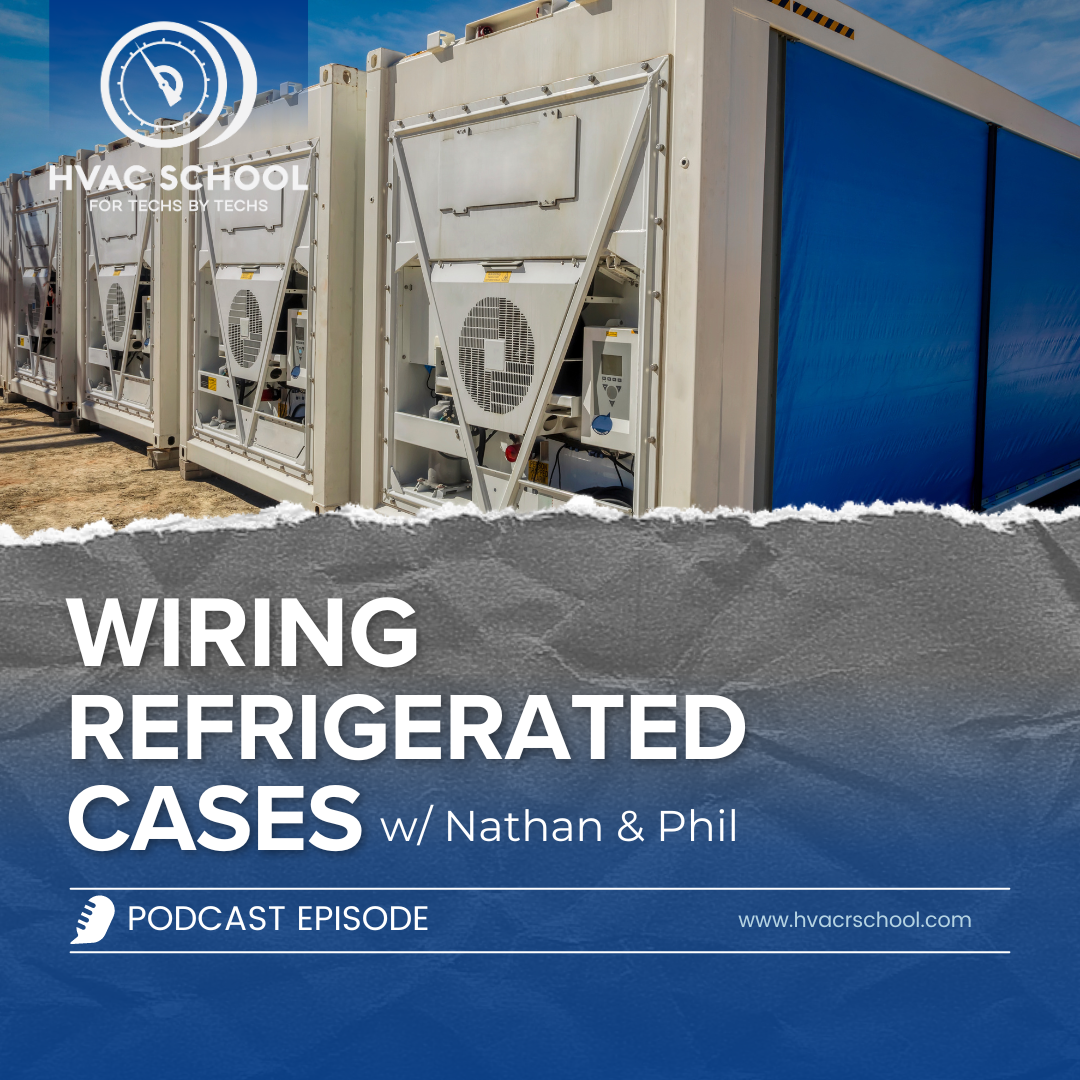Wiring Refrigerated Cases w/ Nathan & Phil

Phil Barr and Nathan Orr join the podcast to talk about wiring refrigerated cases in commercial spaces, including convenience stores and supermarkets.
Cases may be medium-temp (or high-temp, in some cases) or low-temp. Medium-temp cases can typically defrost on their own during the off cycle, and low-temp cases may have electric or hot-gas defrost to help get ice off the coil at set intervals. Each system has an evaporator (and fans), compressor, condenser, and metering device (often a TXV or EEV), and low-temp refrigeration may have anti-sweat heaters, EPRs, and other components to manage.
Challenges arise when electricians don't understand the fundamentals of commercial refrigeration, especially as the electrical circuitry relates to the refrigeration circuit components. Time crunches also apply a lot of pressure to electricians and refrigeration technicians. Testing circuits, such as fans and lighting, or using circuit tracers are good ways to get an idea of how an existing system is wired. Labeling wires and breakers and keeping those labels or information in places where others can read them can help you and other electricians in the future.
One of the most common issues happens when technicians or electricians refuse to test out their results to catch their mistakes before callbacks happen. Even seemingly small electrical issues, such as improper lighting, can cause costly losses if product spoils and cannot be sold.
Phil, Nathan, and Bryan also cover:
- Changes in central and case control strategies over time
- Challenges with retrofits and remodels
- Central lighting controls
- Mistakes that can be made when labeling wires or breakers
- Working against the clock
- Terminal blocks, DIN rails, and connectors
- Making mistakes and the origin of animosity
Learn more about the HVACR Training Symposium or buy a virtual ticket today at https://hvacrschool.com/symposium.
If you have an iPhone, subscribe to the podcast HERE, and if you have an Android phone, subscribe HERE.
Check out our handy calculators HERE.
Author:









Comments
To leave a comment, you need to log in.
Log In